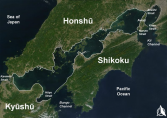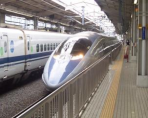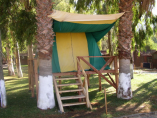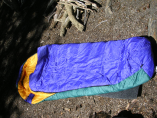introduction

Muke: Japan shikoku map small; 2 April 2005
Shikoku is the smallest (18,800 km²) and least populous of the four main islands of Japan. Forested and mountainous, it is located to the south of Honshu and east of Kyushu; separated from Honshu by the Inland Sea.
surfing

NASA: Shikoku, Japan; 2005
Shikoku lies to the south of Tokyo but still suffers the hangover of crowds. The region has an east and west coast. The East offering more reliable North Pacific wind swell and rarer groundswells with the west occasionally producing typhoon generated rarities from the coastal regions of China. Mount Fuji dominates the entire landscape as it has for several million years. The breaks on the east coast really need a southerly-orientated swell to work properly, which is very rare.
Worth hitting the coast if this event is occurring but most surfers and merely transiting through the region ultimately heading north, south or west when a typhoon off China makes it a whole new ballgame.
travel

A 500-series Nozomi shinkansen train entering Kyoto station (from www.wikitravel.org)
Japan has one of the world's best transport systems, so you will really enjoy travelling around the country. Transportation can be quite expensive, but fast and safe. Train is definitely the most popular option. Japanese railway system covers the majority of the country and trains nearly always depart and arrive on time, so you can rely on the schedule. Just remember that most trains don’t operate 24 hours, so plan a backup if want to be out late. The first and most confusing aspect of the system is the overlap of several private railway networks with the JR network, plus Tokyo also has two separate metro systems. So just be aware of that. Also note, that private railways are often cheaper than JR for an equivalent journey.
Another option is to travel by plane with the majority of domestic flights leaving from Haneda (HND) in Tokyo, Itami (ITM) in Osaka and Kobe’s airport. Book tickets in advance, which may allow you to get a significant discount, otherwise it will be quite expensive; and allow 3-4 hours to transfer. If you are 22 or younger, check the Skymate Card for special prices.
Boats are a surprisingly uncommon means of transport, mainly because the major islands are linked together by bridges and tunnels. There are some long-distance ferries linking Okinawa and Hokkaido, but it will be cheaper to travel by plane/train.
Long-distance highway buses are much cheaper than trains, but prepare for the longer journey and less comfort. Local buses are common in smaller towns and have the idiosyncratic payment system, where you board from the back of the bus and grab a little numbered slip as you enter. You pay at the end of your trip after pressing a stop button. You should deposit the slip and corresponding payment in the fare machine next to the driver (there is an electronic board there displaying numbers and prices below), just make sure before the trip that you are nor short on change.
Taxis are a bit expensive, but they are clean, completely safe and can be found everywhere in Japan, even in the country.
where to stay

Hessam M. Armandehi: Campsite; September 2005
Like all over Japan, the most common place to stay is youth hostels.
Kochi Youth Hostel is about a 5 minute walk from JR Engyoujiguchi station. It is an excellent place to stay and run by a former sake brewer who will provides a sake tasting workshop for an extra cost.
Uwajima Youth Hostel is located on a hill to the south of Uwajima - quite a walk from the train station. A night is fairly inexpensive but does not include breakfast.
Sunokawa Park Camping is a seaside camping ground located an hour down the road south from Uwajima. You can easily get there by bus as there is a bus stop right outside.
It is extremely cheap, roughly ¥300 but does not have much other than the land. You only get necessities such as showers, toilets, bbq area and grass.
what to pack

Smack: Mummy bag; 10 August, 2006
All the gear if you plan to camp: a good sleeping bag and tent that will provide you with warmth; special gas container u can use for heating food and water; a sturdy backpack or a cargo pack with a good daypack. Invest in a portable water filter or at least take some puri-tabs or boil the water. Pack warm and cool clothes.
Definitely take along some bug repellent spray, good sunscreen, a hat and sunglasses! You can buy everything from Japan as it is a developed country. Don't pack too much to save space for your shopping. By the way, getting medical insurance would be a good idea.






